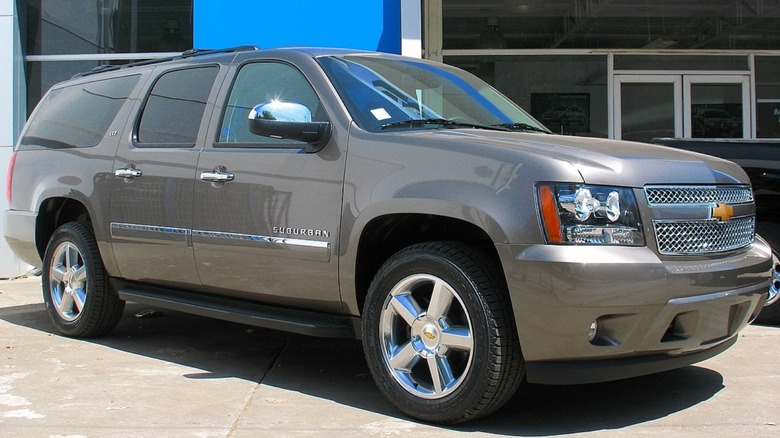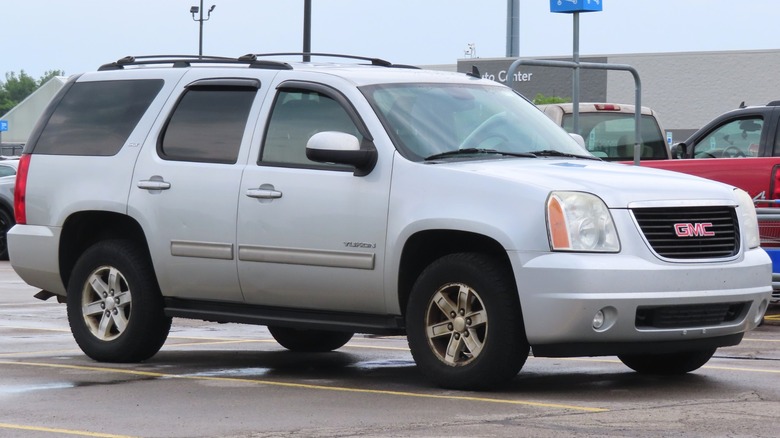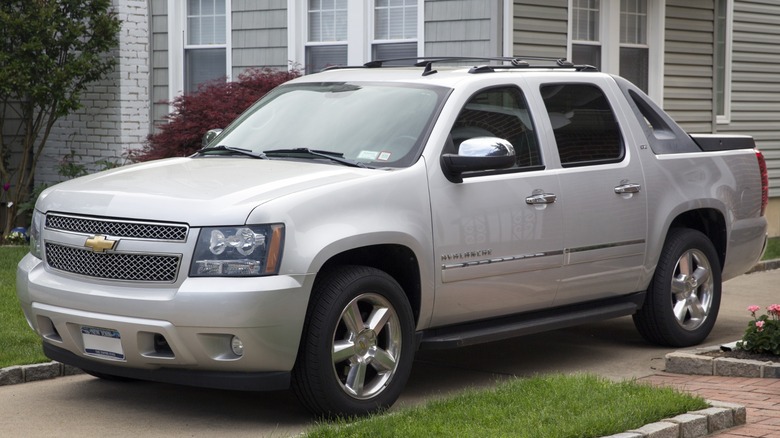How Much HP Does The GM LC9 Engine Have & Is It Any Good? Here's What Users Say
General Motors introduced the LC9, a 5.3L V8 Vortec engine, in the tenth-generation, four-wheel-drive GMT900-based Chevrolet Suburban and GMC Yukon XL. The LC9 is a member of the Gen IV V8 GM small block family. It has a compression ratio of 9.6:1 and uses two overhead valves per cylinder activated by hydraulic roller lifters and pushrods driven by a single, centrally-located camshaft. LC9 engines were assembled in Romulus, Michigan, or Silao, Mexico, beginning in 2006 and ending after orders were filled for the 2014 model year. It was replaced by the EcoTec3 5.3-liter V8 engine.
The 5.3L LC9 Vortec is a performance engine at heart with only minor differences from GM's LS engine. The list of materials includes cast-aluminum cylinder heads and engine block, a composite intake manifold, a cast nodular iron crankshaft, and powdered metal connecting rods and main bearing caps.
The LC9 can operate on regular unleaded gasoline or E85. Using regular unleaded, the LC9 V8 produces 320 horsepower at 5,400 rpm and 335 lb-ft of torque at 4,000 rpm. With E85 in the tank, the LC9 produces 326 horsepower at 5,300 rpm with peak torque of 348 lb-ft at 4,400 rpm.
The GM LC9 engine had some problems
The General Motors 5.3-liter Vortec enjoyed some of its best years prior to the LC9's introduction for the 2007 model year. However, as part of the Gen IV GM small block 5.3-liter Vortec family, the LC9 had a few problematic design choices not seen in the previous generation. One design flaw involved the positive crankcase ventilation, or PCV, system. While previous generation 5.3-liter Vortec V8s used PCV, the Gen IV design allowed engine oil to pool around the valve guides on top of the cylinder heads and seep into the combustion chamber.
The new AFM (Active Fuel Management) system present on the LC9 also possessed a design flaw that consumed engine oil. The system deactivates four of the engine's eight cylinders when they're not needed, such as cruising on flat or downhill stretches of road. The system's flawed pressure relief valve design allowed oil to squirt past the piston skirts and rings, where it was consumed in the combustion chamber. The two problems were so pervasive that GM had to pay 38,000 LC9 owners a total of $102.6 million in 2022 as the result of a class-action lawsuit.
Owner-reported problems on CarComplaints.com for the 2007 Chevrolet Suburban peaked at 354 reports compared to just four for the 2006 model year. Engine problems were the most common issue, although CarComplaints lists transmission failure as the number one problem, followed by engine failure and engine shutdown.
What do users think of the GM LC9?
Other than issues leading to the class action lawsuit, users of the GM LC9 seem pretty content, judging by the forum posts found online. Owner opinions are positive about the potential of the Gen-IV 5.3-liter GM V8. R6cowboy posted on the LS1Tech forum that 600 horsepower from a turbocharged 5.3 with stock internals "ain't nothing" as a vote of confidence. JoeNova added that the 5.3 upgrade market had six options for forged pistons and "everything else is interchangeable with the LS1."
While GM continued to use the LC9 in production vehicles through the 2014 model year, anecdotal evidence from owners, such as joeyazzata4 on the Chevy Silverado and GMC Sierra forum, suggests that GM had fixed the oil consumption issues by 2011. In a Reddit thread, user shawizkid pointed out that even though the 5.3-liter LC9 engines with AFM were known to suffer from lifter failures, the newer EcoTec3 engines with Dynamic Fuel Management (DFM) have more problems.
The automaker issued a Technical Service Bulletin in 2014 involving modified valve covers to address the problem. Chevy Silverado and GMC Sierra forum user esox07 and others also suggested that disabling or deleting the LC9 AFM could "prevent the problem by ensuring the truck stays in 8 cyl[inder] mode."


